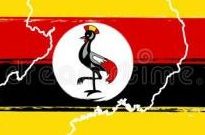What Is Millet?
Millets are a highly varied group of small-seeded grasses, widely grown around the world as cereal crops or grains for fodder and human food. Most species generally referred to as millets belong to the tribe Paniceae, but some millets also belong to various other taxa.
How To Grow Millet In Uganda?
Quick Tips for planting finger millet in Uganda
Winnow the millet grains meant for planting if you are to use home kept grains.
The alternative would be washing the seeds in water and sieving off the floating seeds.
Finger millet production is more on fine seed beds.
Open up a shallow trench on a well prepared land.
How Do You Prepare Land For Millet In Uganda?
Land preparation
It is highly recommend you rotate with leguminous crops. Millet requires the land to prepared by tillage or harrowing. Tillage is very labourious, it is advised to consider mechanization (i.e harrowing by tractor). Sowing can be done on flat ground or on ridge, depending your your preference.
How Do We Plant Millet In Uganda?
Plant the individual seeds at least 2 inches (5 centimeters) apart from each other. Cover the seeds with at least an inch (2.5 centimeters) of soil. The rows of seeds should be at least 12 inches (30.5 centimeters) apart. Add additional compost or nitrogen-rich fertilizer to the ground as the millet grows.
How Long Do Millet Take To Grow In Uganda?
Remember, it takes 60 days to grow millet to maturity (good seed formation). If it is not raining and weather allows, you can cut, bale and remove the hay within a week.
What Is The Production Of Millet Per Acre In Uganda?
Millet as Animal Feed & Green Manure
Forage dry matter yields are generally between 2.5-5 tons/acre, depending on fertility and growing conditions. The feed quality is good if harvested before the boot stage.
In Which Month Millet Is Grown In Uganda?
It is mostly cultivated in Jhum field. April- May months is best for its cultivation in Jhum field. Climate: Generally the Millets are grown in tropical as well as sub-tropical upto an altitude of 2,100m. It is a heat loving plant and for its germination the minimum temperature required is 8- 10°c.
What Is The Best Time To Plant Millet In Uganda?
Most of the millets need warm soil temperatures of typically 70 degrees F. or more for seed germination, so are normally planted in the latter half of May or early June depending on the growing region; proso millet can tolerate cooler temperatures and can be seeded when soil temperature is 55 to 65 degrees F.
Does Millet Need Fertilizer In Uganda?
Proso millet is generally grown under dryland conditions, either in continuous cropping or after summer fallow. Nitrogen fertilizer is often required for profitable production. Proso millet planted following another crop, such as wheat, has a higher nitrogen requirement than after summer fallow.
Where Does Millet Grow Best In Uganda?
Millets are important crops in the semiarid tropics of Asia and Uganda, Mali, Nigeria, and Niger, with 97% of millet production in developing countries. This crop is favored due to its productivity and short growing season under dry, high-temperature conditions.
Will Millet Regrow After Cutting In Uganda?
It can reach heights of over 6′ tall at full maturity, making it more comparable to sorghum-sudangrass than to other common hay millets. Pearl Millet will regrow following cutting or grazing and can be used in a multi-harvest scenario. Pearl Millet is drought hardy and grows well in light or sandy soils.
Where Is Millet Grown In Uganda?
The commonest type of millet grown in Uganda is the finger millet, which is a major staple and cash crop in northern, eastern, western and south-western Uganda.
How Long Does It Take Millet To Germinate In Uganda?
Sow thinly and evenly and cover with ½ inch of fine soil. Firm lightly and keep evenly moist. Seedlings will emerge in about 10-21 days depending on soil and weather conditions. Thin to stand about 10-12 inches apart.
Will Millet Grow In Sandy Soil In Uganda?
Millet will grow on either sandy or heavy soils and thrives on any land that contains plant food in sufficient quantity to produce any sort of hay or grain. When irrigated it yields heavily as 1 green forage, hay, or seed, frequently producing 40 to 60 bushels of seed to the acre when grown on rich soil.
How Do You Harvest Millet Seeds In Uganda?
Millet can be harvested either by hand or with the use of a mechanical thresher. To save seeds cut the mature seed cluster from the stem, the mature seeds will be swollen and release easily from the cluster by simple rubbing. They are very small, roundish with pointed ends and light wheat color.
Which Soil Is Required For Millets In Uganda?
Sandy and soft coloured Goradu soil is suitable for millet. Millet requires less rainfall, moderate temperature and an adequate amount of sunlight.
Is Millet Good For Chickens In Uganda?
Pearl millet has been shown to be a suitable feed ingredient for poultry diets. Up to 50% pearl millet can be added to broiler diets without adversely affecting performance. Pearl millet is higher in methionine than corn, alleviating some of the need for synthetic methionine supplementation in organic poultry diets.
